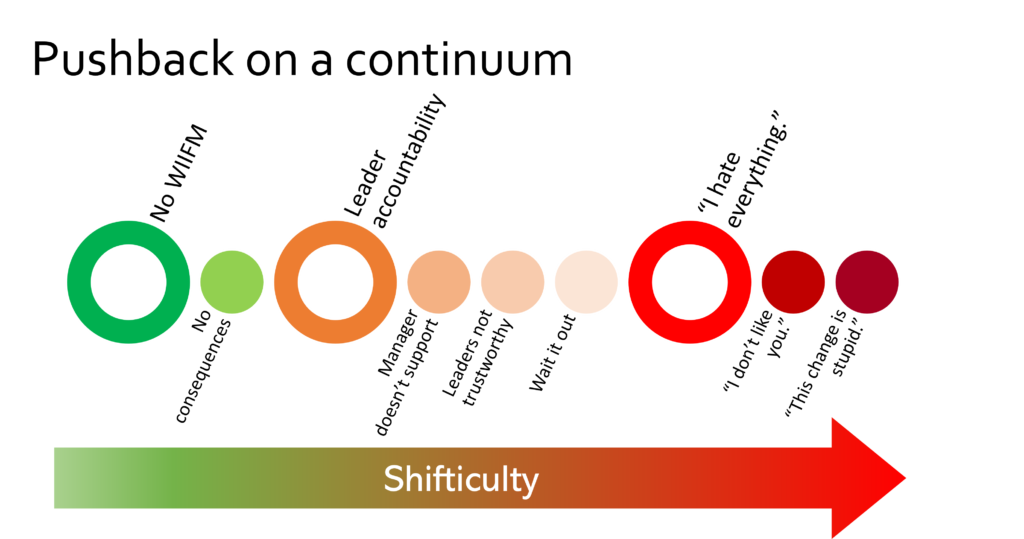If you search for images of resistance, you inevitably end up with raised fists, and people working out with stretchy bands. They’re both right. Resistance is not one-dimensional, and it’s not all bad, despite the negative connotations we associate with the word.
Last week we looked at the first resistance response: I can’t. There are many reasons why people cannot proceed, and the same applies to a response of “I won’t!”.
When people say or demonstrate that they won’t embrace a change, the reason would seem to be obvious: They’re stubborn! They don’t like change! Right?
Consider: What are people doing with those stretchy bands? They are testing the limits. They push and they pull without breaking them. The same applies when people refuse to move. Some of them are testing what they can get away with; whether leadership is serious about the change. In fact, there are many reasons why people say I won’t:
1. No Benefits/Consequences: If there’s nothing in it for me, why should I do this? If there’s no consequence for non-compliance, what is the driver?
2. Lack of leader credibility
The leader of the change has a poor track record or is not seen to be honest about the real pain that will accompany the change. There is a credibility gap. Even worse is the gap is with a person’s immediate manager. If he or she is not onboard, there is little incentive for employees to follow.
3. “I hate everything.”
Finally, there are people who resist everything just because they can. They don’t like the change and they don’t like anyone who is leading.
SHIFTICULTY
Plotting these reasons on a continuum illustrates how the degree of difficulty to shift someone’s perspective from I won’t to I will gets more difficult (increasing shifticulty) as we move to the right.

Turning it Around
Improve clarity by illustrating the benefits of change not just for employees, but for clients, customers, communities, and even countries. Connecting the dots from change to the betterment of people’s lives goes a long way to convincing that the change and associated pain is worthwhile. Leader credibility can be enhanced by highlighting past successes and by leading by example – demonstrating that leaders are changing first! Work closely with middle managers to ensure they are reinforcing the message with conviction.
But some people simply will not be moved. They need to be removed or they will make everyone else hesitate. Dealing with a toxic element sends a clear message that the change is real.
There are many reasons for resistance. Many of them are legitimate when we take the time to ask “why” and understand a person’s point of view. Doing so allows us to convert I can’t and I won’t to I will. Next week we will look at the third reason for resistance: I’m afraid.



